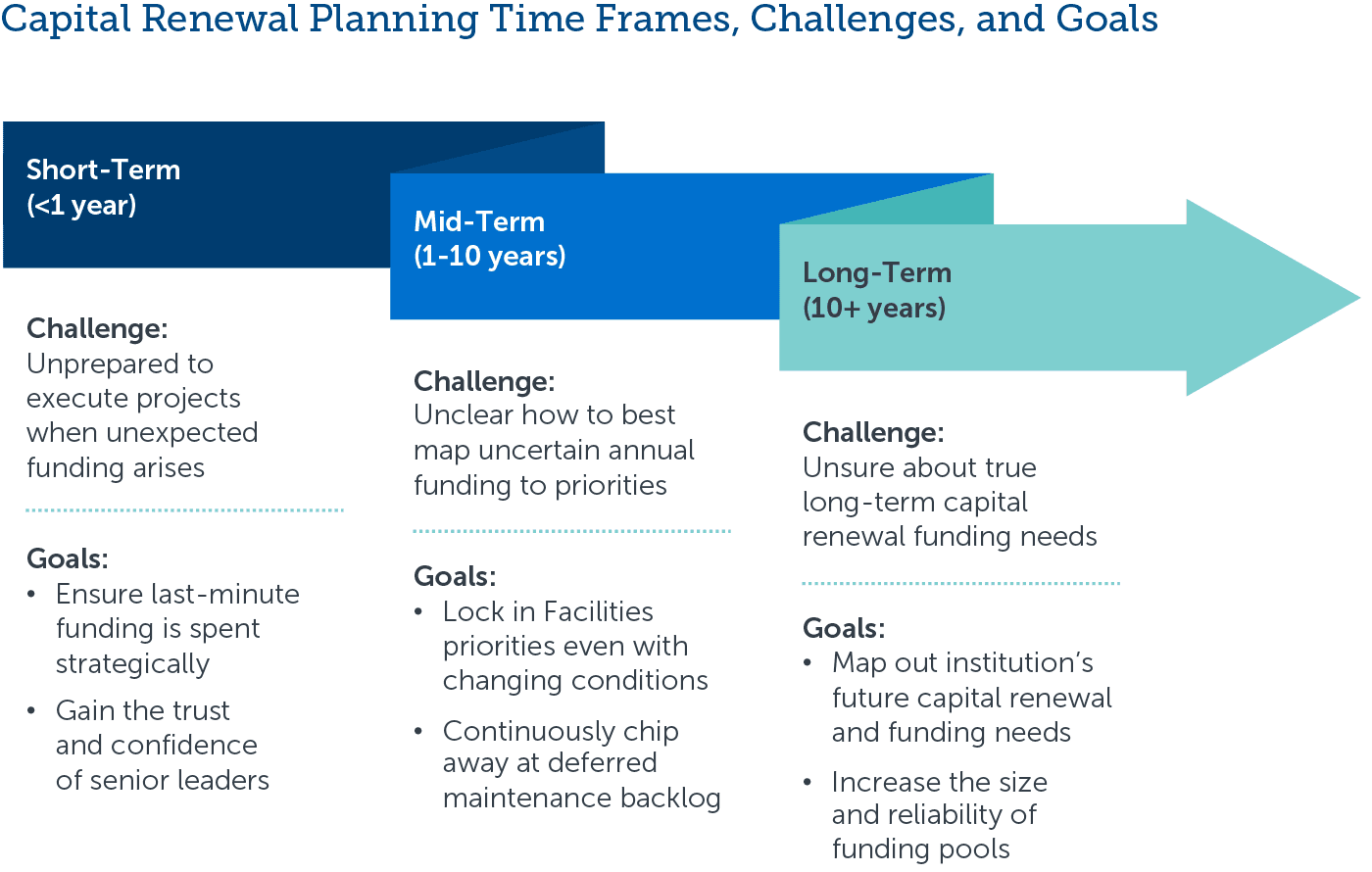Enhance Your Capital Project Planning Process
From renovating existing facilities to constructing new buildings, institutions complete many capital projects each year. While critical for modernizing campus for functional and aesthetic reasons, the process for determining which capital projects are funded—and which are not—is complex and politically fraught.

"My title suggests my job is to oversee the development and construction of campus buildings. Really, I’m just a glorified accountant. And it’s getting harder and harder to get the money I need."
Building maintenance endowments enable an initially small investment to grow into a sizeable pool of money from which resources can be pulled to pay for maintenance and renewal. While maintenance endowment may increase project costs at the beginning, they can reduce the long-term costs for the space and streamline future capital renewal projects by easing funding uncertainties. Some institutions, like Furman University and the University of Idaho, have leveraged building endowments successfully for decades.



Prototyping can save institutions from moving too soon by mitigating resistance and piloting certain investments ahead of time. However, successful prototyping requires a commitment of time and effort to get right. In particular, leaders should put serious thought into which spaces will benefit from prototyping, who should participate, and how to gather feedback.

This resource requires EAB partnership access to view.
Access the roadmap
Learn how you can get access to this resource as well as hands-on support from our experts through Strategic Advisory Services.
Learn More





